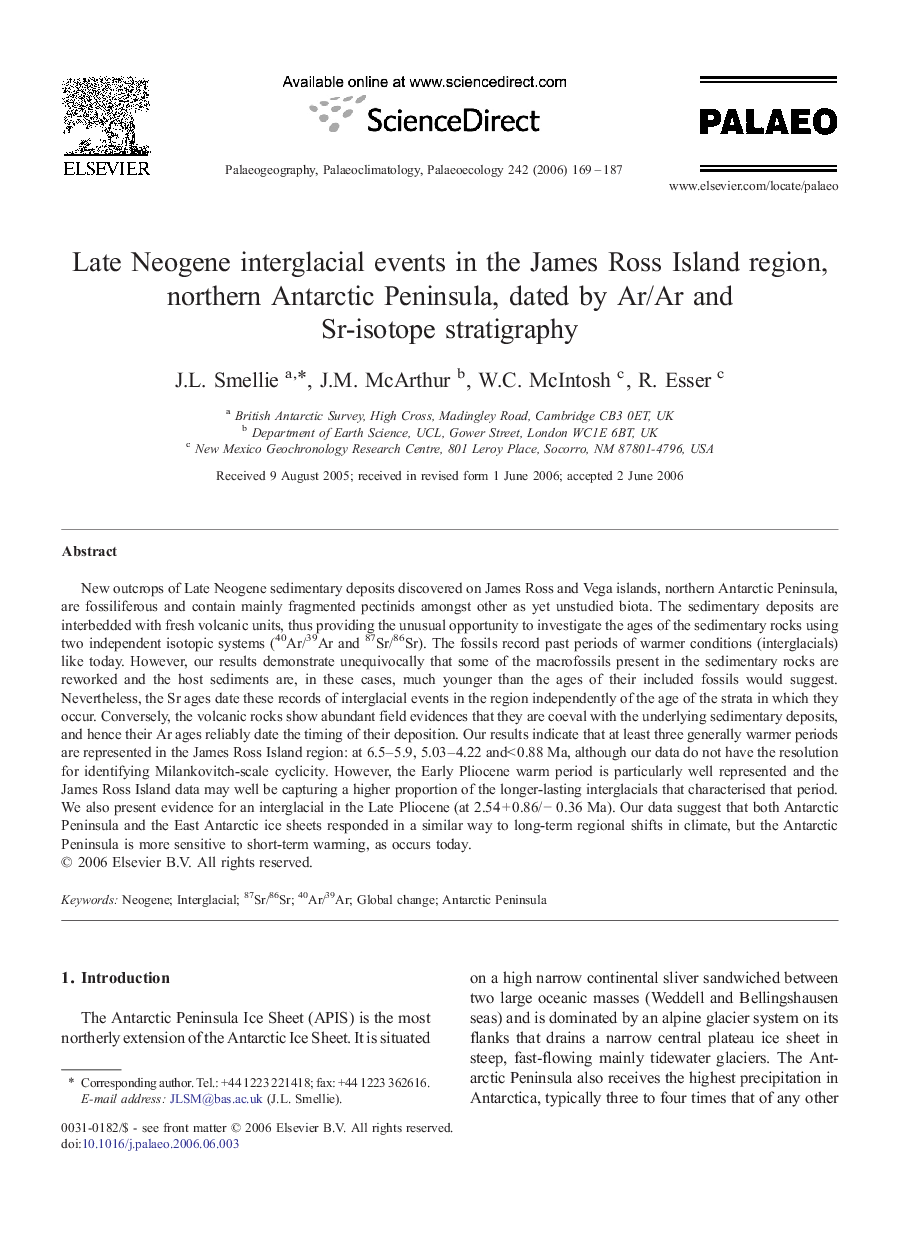| کد مقاله | کد نشریه | سال انتشار | مقاله انگلیسی | نسخه تمام متن |
|---|---|---|---|---|
| 4469018 | 1622362 | 2006 | 19 صفحه PDF | دانلود رایگان |

New outcrops of Late Neogene sedimentary deposits discovered on James Ross and Vega islands, northern Antarctic Peninsula, are fossiliferous and contain mainly fragmented pectinids amongst other as yet unstudied biota. The sedimentary deposits are interbedded with fresh volcanic units, thus providing the unusual opportunity to investigate the ages of the sedimentary rocks using two independent isotopic systems (40Ar/39Ar and 87Sr/86Sr). The fossils record past periods of warmer conditions (interglacials) like today. However, our results demonstrate unequivocally that some of the macrofossils present in the sedimentary rocks are reworked and the host sediments are, in these cases, much younger than the ages of their included fossils would suggest. Nevertheless, the Sr ages date these records of interglacial events in the region independently of the age of the strata in which they occur. Conversely, the volcanic rocks show abundant field evidences that they are coeval with the underlying sedimentary deposits, and hence their Ar ages reliably date the timing of their deposition. Our results indicate that at least three generally warmer periods are represented in the James Ross Island region: at 6.5–5.9, 5.03–4.22 and< 0.88 Ma, although our data do not have the resolution for identifying Milankovitch-scale cyclicity. However, the Early Pliocene warm period is particularly well represented and the James Ross Island data may well be capturing a higher proportion of the longer-lasting interglacials that characterised that period. We also present evidence for an interglacial in the Late Pliocene (at 2.54 + 0.86/− 0.36 Ma). Our data suggest that both Antarctic Peninsula and the East Antarctic ice sheets responded in a similar way to long-term regional shifts in climate, but the Antarctic Peninsula is more sensitive to short-term warming, as occurs today.
Journal: Palaeogeography, Palaeoclimatology, Palaeoecology - Volume 242, Issues 3–4, 8 December 2006, Pages 169–187